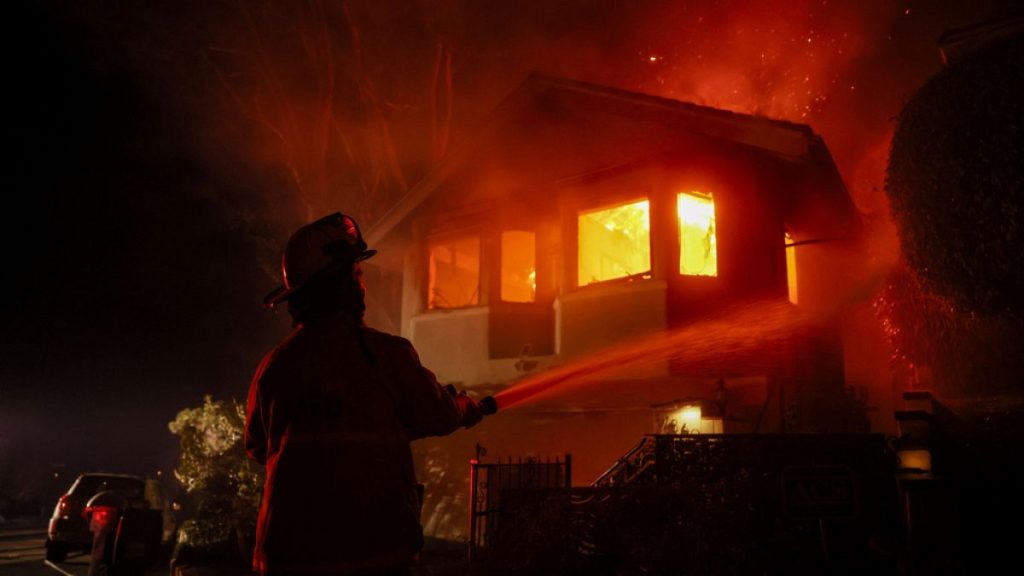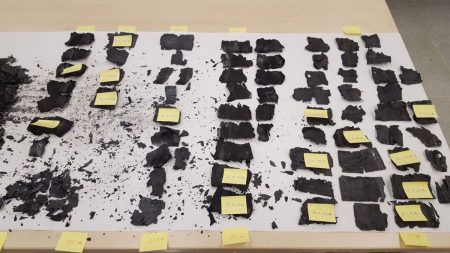The devastating wildfires sweeping through Southern California are projected to inflict a staggering economic blow, with preliminary estimates from AccuWeather Inc. placing the total damage and economic losses between a staggering $52 billion and $57 billion (approximately €50 billion to €55 billion). This preliminary figure reflects the immense destruction already wrought by the fires, which are rapidly escalating into one of the worst wildfire events in California’s history, potentially surpassing previous disasters in terms of structures destroyed and overall economic impact. The fires, fueled by powerful Santa Ana winds, have already claimed at least five lives, a number tragically expected to rise as the situation unfolds and assessments continue.
The heart of the devastation lies in the affluent coastal region stretching from Santa Monica to Malibu, an area renowned for its high-value real estate. With median home prices exceeding $2 million, the destruction of over 1,000 structures, primarily residential homes, represents an immense financial loss. Beyond the immediate property damage, the economic toll encompasses a multitude of factors, including the disruption of businesses, the impact on tourism, and the long-term health consequences from smoke inhalation and damage to non-destroyed structures. The disruption to daily life is profound, with over 130,000 residents displaced from their homes under mandatory evacuation orders, a number fluctuating as new fires ignite and existing ones spread.
The severity of the fires is attributed to a confluence of factors, most notably the exceptionally strong Santa Ana winds that have fanned the flames with gusts reaching hurricane-force speeds of 70-100 mph. These powerful winds have created extremely challenging conditions for firefighters battling the infernos, rapidly spreading the flames across vast swathes of land and into densely populated areas. The speed and intensity of the fires have overwhelmed firefighting efforts, leaving many residents with little time to evacuate and salvage their belongings. The wind-driven nature of the fires has also made containing the blazes incredibly difficult, further exacerbating the devastation.
The long-term recovery process promises to be arduous and complex, requiring a concerted effort from the community, authorities, and various aid organizations. The sheer scale of the destruction necessitates a comprehensive and sustained approach to rebuilding, encompassing not only the physical reconstruction of homes and infrastructure but also the economic revitalization of affected communities and the provision of long-term support for displaced residents. Adding to the challenges is the fact that many homeowners in the Pacific Palisades area lack property insurance, as insurance companies have become increasingly reluctant to provide coverage in this high-risk, high-value region due to the escalating threat of wildfires.
This lack of insurance coverage will significantly complicate the recovery efforts, placing a greater burden on government assistance and charitable organizations to provide financial aid to those who have lost everything. Furthermore, the psychological impact of the disaster will be long-lasting, with residents grappling with the trauma of losing their homes, possessions, and in some cases, loved ones. The fires have exposed the vulnerability of even the most affluent communities to the devastating power of natural disasters, raising concerns about the long-term viability of living in high-risk fire zones.
Looking ahead, AccuWeather emphasizes the dynamic nature of the situation, acknowledging that the estimated damage and economic loss could rise substantially if the fires continue to spread into densely populated areas, placing thousands of additional homes at risk. The ongoing threat underscores the urgency of containing the blazes and providing immediate relief to those affected. As the fires continue to rage, the focus remains on protecting lives and property, while the full extent of the devastation and its long-term consequences are still unfolding. The California wildfires serve as a stark reminder of the increasing threat of climate change-fueled disasters and the urgent need for comprehensive mitigation and adaptation strategies.














